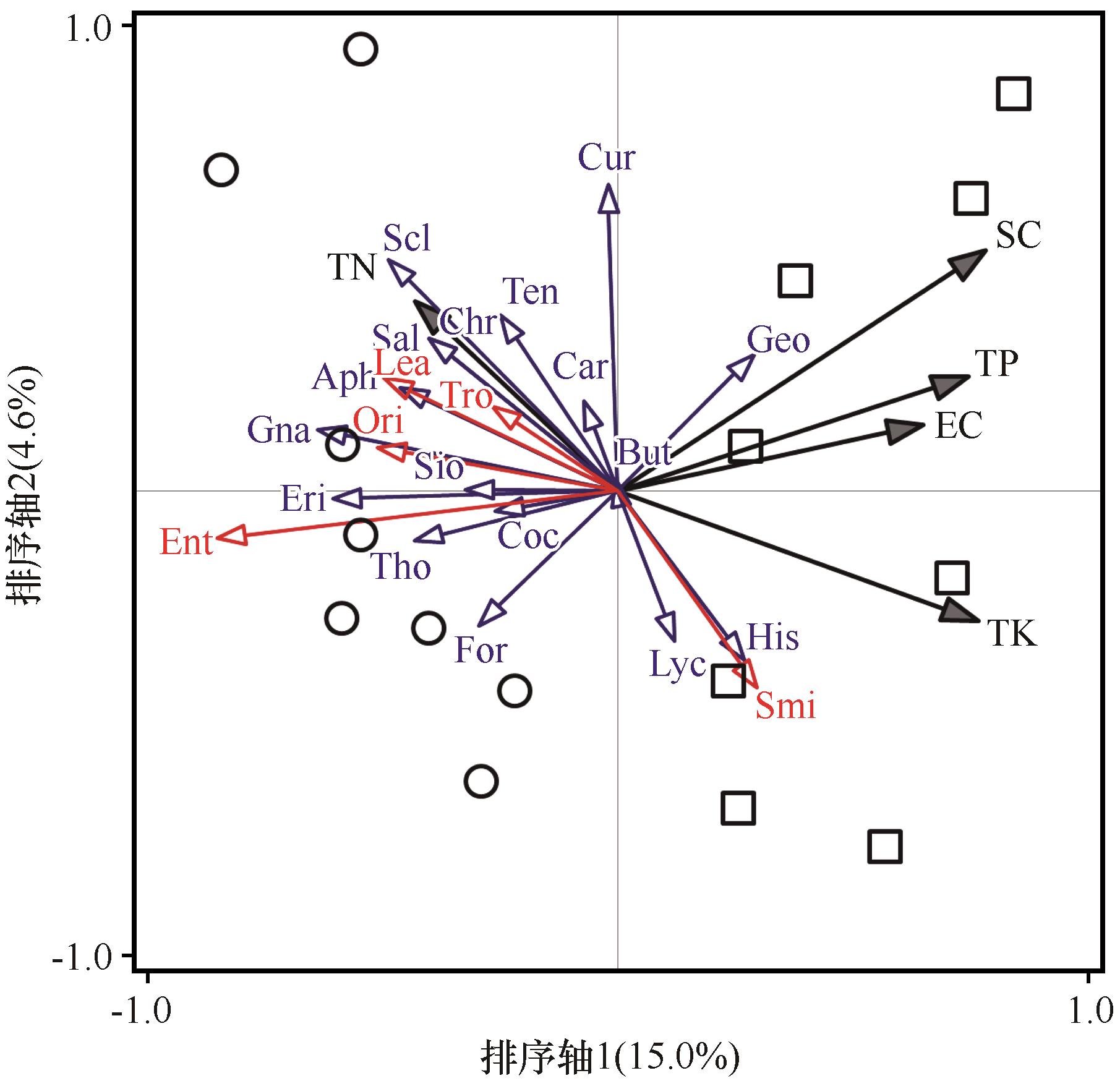河西走廊中部荒漠收获蚁( Messor desertus )蚁穴对秋季地表节肢动物群落结构的影响
Effects of Messor desertus ant nests in the middle of Hexi Corridor on the community structure of ground arthropods in autumn
○代表蚁穴,□代表毗邻裸地。黑色箭头代表环境因子,EC为电导率,SC为土壤黏粒,TN为土壤全氮,TP为土壤全磷,TK为土壤全钾。蓝色箭头代表地表大型节肢动物,But为钳蝎科,Scl为硬体盲蛛科,Lyc为狼蛛科,Gna为平腹蛛科,Sal为跳蛛科,Eri为微蛛亚科,Tho为蟹蛛科,Car为步甲科,Coc为瓢虫科,His为阎甲科,Cur为象甲科,Sta为隐翅虫科,Geo为粪金龟科,Apho为蜉金龟科,Sio为锯谷盗科,Chr为叶甲科,Ten为拟步甲科,For为蚁科。红色箭头代表地表中小型节肢动物,Ent为长角跳科,Smi为圆跳科,Ori为甲螨亚目,Tro为绒螨科,Lea为厉螨科
